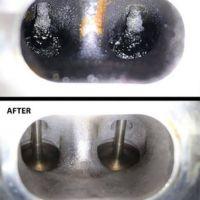Clean valves are an essential component in various industries that require the transfer of fluids or gases without any contamination. These industries include pharmaceuticals, food and beverage, biotechnology, cosmetics, and many others.
Clean valves are designed to meet strict sanitary requirements, ensuring that they do not compromise the quality of the product being transferred. Materials used to make clean valves must be inert to the product being transferred, easy to clean, corrosion-resistant, and have high mechanical strength. Some of the materials used to make clean valves include:
-
Stainless Steel: Stainless steel is a popular material used in the manufacture of clean valves. It is corrosion-resistant, has excellent mechanical strength, and is easy to clean. Stainless steel can withstand high temperatures and pressures, making it suitable for use in various industries.
-
PTFE: PTFE (Polytetrafluoroethylene) is a fluoropolymer that is known for its excellent chemical resistance and high-temperature resistance. It is also easy to clean and does not react with most chemicals. PTFE is often used in the manufacture of diaphragms, seats, and seals for clean valves.
-
Hastelloy: Hastelloy is a nickel-based alloy that is resistant to a wide range of chemicals, including sulfuric acid, hydrochloric acid, and nitric acid. It is also resistant to high temperatures and pressures, making it suitable for use in harsh environments. Hastelloy is often used in the manufacture of valve bodies and other components in clean valves.
-
Polypropylene: Polypropylene is a thermoplastic polymer that is resistant to a wide range of chemicals, making it ideal for use in clean valves. It is also lightweight, easy to mold, and has a low coefficient of friction, which makes it easy to clean. Polypropylene is often used in the manufacture of valve bodies and other components.
-
Brass: Brass is an alloy of copper and zinc that is often used in the manufacture of clean valves. It is corrosion-resistant, easy to machine, and has excellent mechanical strength. Brass is often used in the manufacture of small components such as valve stems, seats, and seals.
In conclusion, clean valves are made from a variety of materials depending on the specific application. The materials used must be inert to the product being transferred, easy to clean, corrosion-resistant, and have high mechanical strength. Some of the most common materials used include stainless steel, PTFE, Hastelloy, polypropylene, and brass.
Manufacturers must carefully select the appropriate material for each component to ensure that the valve meets the required standards for cleanliness and functionality.

